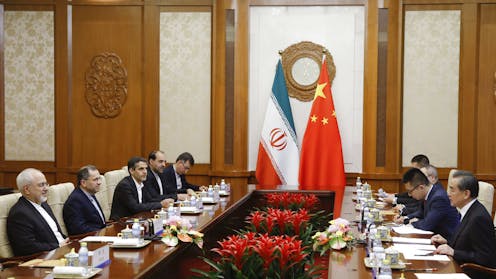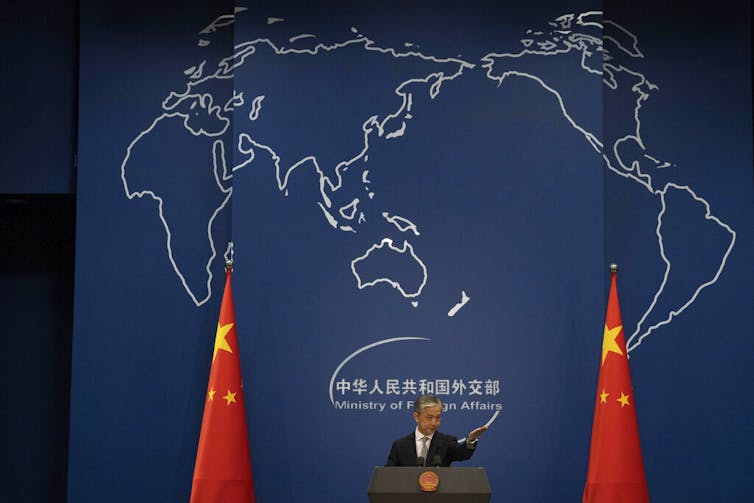Source: The Conversation – Global Perspectives – By Amra Lee, PhD candidate in Protection of Civilians, Australian National University
Israel partially lifted its aid blockade of Gaza this week in response to intensifying international pressure over the man-made famine in the devastated coastal strip.
The United Arab Emirates and Jordan airdropped 25 tonnes of food and humanitarian supplies on Sunday. Israel has further announced daily pauses in its military strikes on Gaza and the opening of humanitarian corridors to facilitate UN aid deliveries.
Israel reports it has permitted 70 trucks per day into the strip since May 19. This is well below the 500–600 trucks required per day, according to the United Nations.
The UN emergency relief chief, Tom Fletcher, has characterised the next few days as “make or break” for humanitarian agencies trying to reach more than two million Gazans facing “famine-like conditions”.
A third of Gazans have gone without food for several days and 90,000 women and children now require urgent care for acute malnutrition. Local health authorities have reported 147 deaths from starvation so far, 80% of whom are children.
Israeli Prime Minister Benjamin Netanyahu has claimed – without any evidence – “there is no starvation in Gaza”. This claim has been rejected by world leaders, including Netanyahu ally US President Donald Trump.
Famine expert Alex de Waal has called the famine in Gaza without precedent:
[…] there’s no case of such minutely engineered, closely monitored, precisely designed mass starvation of a population as is happening in Gaza today.
While the UN has welcomed the partial lifting of the blockade, the current aid being allowed into Gaza will not be enough to avert a wider catastrophe, due to the severity and depth of hunger in Gaza and the health needs of the people.
According to the UN World Food Programme, which has enough food stockpiled to feed all of Gaza for three months, only one thing will work:
An agreed ceasefire is the only way to reach everyone.
Airdrops a ‘distraction and a smokescreen’
Air-dropping food supplies is considered a last resort due to the undignified and unsafe manner in which the aid is delivered.
The UN has already reported civilians being injured when packages have fallen on tents.
The Global Protection Cluster, a network of non-governmental organisations and UN agencies, shared a story from a mother in Al Karama, east of Gaza City, whose home was hit by an airdropped pallet, causing the roof to collapse:
Immediately following the impact, a group of people armed with knives rushed towards the house, while the mother locked herself and her children in the remaining room to protect her family. They did not receive any assistance and are fearful for their safety.
Air-dropped pallets of food are also inefficient compared with what can be delivered by road.
One truck can carry up to 20 tonnes of supplies. Trucks can also reach Gaza quickly if they are allowed to cross at the scale required. Aid agencies have repeatedly said they have the necessary aid and personnel sitting just one hour away at the border.
Given how ineffective the air drops have been – and will continue to be – the head of the UN Relief Works Agency (UNRWA) for Palestine has called them a “distraction” and a “smokescreen”.
Malnourished women and children need specialised care
De Waal has also made clear how starvation differs from other war crimes – it takes weeks of denying aid for starvation to take hold.
For the 90,000 acutely malnourished women and children who require specialised and supplementary feeding, in addition to medical care, the type of food being air-dropped into Gaza will not help them. Malnourished children require nutritional screening and access to fortified pastes and baby food.
Gaza’s decimated health system is also not able to treat severely malnourished women and children, who are at risk of “refeeding syndrome” when they are provided with nutrients again. This can trigger a fatal metabolic response.
Gaza will take generations to heal from the long-term impacts of mass starvation. Malnourished children suffer lifelong cognitive and physical effects that can then be passed on to future generations.
What needs to happen now
The UN has characterised the limited reopening of aid deliveries to Gaza as a potential “lifeline”, if it’s upheld and expanded.
According to Ciaran Donnelly from the International Rescue Committee, what’s needed is “tragically simple”: Israel must fully open the Gaza borders to allow aid and humanitarian personnel to flood in.
Israel must also guarantee safe conditions for the dignified distribution of aid that reaches everyone, including women, children, the elderly and people with disabilities. The level of hunger and insecurity mean these groups are at high risk of exclusion.
The people of Gaza have the world’s attention – for now. They have endured increasingly dehumanising conditions – including the risk of being shot trying to access aid – under the cover of war for more than 21 months.
Two leading Israeli human rights organisations have just publicly called Israel’s war on Gaza “a genocide”. This builds on mounting evidence compiled by the UN and other experts that supports the same conclusion, triggering the duty under international law for all states to act to prevent genocide.
These obligations require more than words – states must exercise their full diplomatic leverage to pressure Israel to let aid in at the scale required to avert famine. States must also pressure Israel to extend its military pauses into the only durable solution – a permanent ceasefire.
![]()
Amra Lee does not work for, consult, own shares in or receive funding from any company or organisation that would benefit from this article, and has disclosed no relevant affiliations beyond their academic appointment.
– ref. Air-dropping food into Gaza is a ‘smokescreen’ – this is what must be done to prevent mass starvation – https://theconversation.com/air-dropping-food-into-gaza-is-a-smokescreen-this-is-what-must-be-done-to-prevent-mass-starvation-262053











